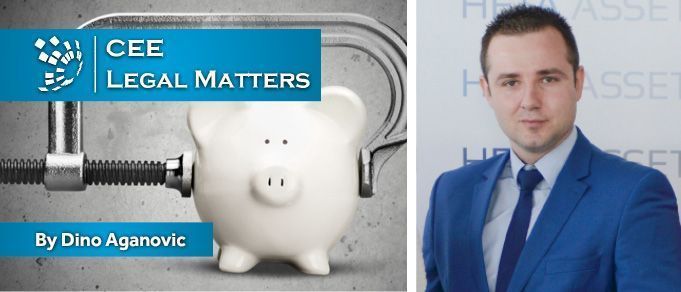Reflecting upon my career, I cannot remember a single employer who did not propose “let’s increase income and cut down expenses.” Yeah! And that always reminds me of the joke when the Bear complained to the Fox, a Consultant, about the problems caused by his size: He was difficult to feed, in need of a big house, and in constant danger as everyone wanted his fur. The Fox told him: “You should become a mouse. They eat little, can live in any hole, and have very few enemies.” The Bear was happy, but puzzled: “How do I become a Mouse?” And the Fox replied: “I am a Consultant. I can tell you what you need to do, not how to get there.”
My focus in this article is on cost-cutting strategies for General Counsel. I am not interested, here, in costs such as utilities, instruments of labor, etc. Instead, I want to focus on cost-cutting related to the activities of the in-house legal department as they involve questions of the balance between in-house and out-of-house solutions, whether to concentrate on one or several law firms, and whether or not to use big brands as oppose to lesser-known or less busy lawyers.
The Purely In-House Solution
After finishing attorney apprenticeships and passing a bar exam, I was given the opportunity to become Head of Legal for two Bosnia and Herzegovina-based affiliates of the Slovenia’s Merkur company. In reality, I was a one-man show for everything related to the legal function, from negotiations of deals and drafting and terminating contracts, through suing and representing the company at court, to all other common in-house legal department activities: ensuring compliance with statutory changes, providing legal advice, and managing HR administration.
Needless to say, it is very difficult to have one person acting as an expert in all fields, when one usually needs the help of a separate expert for each separate field. But this was not the case for me. As Merkur was facing bankruptcy and thus in survival mode, the company had no choice but to replace two full time employees – the HR and legal function – as well as one external counsel, with one in-house person. Two salaries were cut to one and, more importantly, the external counsel fee, which included a success fee five or six times higher than my salary, was cut.
I am glad to note that service did not suffer, because our 300 litigation cases were on the active side, in our collection cases debtors were merely buying time, and we had only a dozen of complex cases with no significant value. So, I compensated for my lack of knowledge and experience with a focused determination that I would not fail. Eventually, this focus became business as usual.
This was an extreme example, of course, and a “one-man show” has many challenges, including an overexposure to all sorts of risks – the biggest two being the potential departure of this one person, which would leave the company without any continuity in a very important function, and the inability of one person to address all the company’s needs, leasing to an unacceptable bottleneck.
Do Not be Afraid to Give a Chance to a Junior Lawyer and Become a Mentor
After Merkur, I became the Head of Legal at Hypo Alpe-Adria-Bank d.d. Mostar, where I was given a budget and instructed to transform an administrative legal department into a provider of full legal support to all the banking functions.
I inherited a team of four lawyers which, while strong, lacked team coherence, initiative, and proactivity. Six months after, only one of them remained. The team soon increased to five – with a combined salary lower than just one of the four previous lawyers. We achieved this by hiring two juniors who were assigned to two well-experienced lawyers and we relied upon talents in other departments.
What happened? The juniors were so keen to prove themselves that their initiative infected the entire team. Their eagerness to learn also helped the senior lawyers to find a sense of higher purpose in being able to mentor someone – so this somehow created a good team spirit while saving money.
Of course, the risk of this strategy is that you may not find adequate candidates, but the only legitimate answer to this is: Do not be afraid of change.
Concentrate on One or Just a Few External Service Providers
In the complex environment that is common in sophisticated and dynamic businesses, it is impossible to rely only on an in-house legal solution. At times, a company can simply not hire additional employees. However, at times it comes down to an issue of purposefulness: you cannot hire experts to work within your team to cover all current and future needs. There are situations when you have to fork out and hire an external service provider.
When hiring an attorney or a consultant, you have to take into consideration the basic principle for every business: You get a bigger discount if you increase turnover.
Apart from getting more favorable conditions when focusing on one supplier, you tend to form a sort of symbiosis, meaning that you as a GC do not have to spend as much time explaining your issues and your expectations to the external service provider as you would with someone you work with less regularly. In addition, by securing external counsel able to obtain knowledge of and understanding for your needs, you get a fully attentive partner able to provide free tips and/or information to keep you from getting into an off-side situation and helps you improve your business.
Choosing a Brand Name Attorney vs. a Less-Known or Less Busy Attorney
One sentence remains carved in my memory from the 2016 GC Summit in Istanbul: “You do not pull out a tank to kill a fly.”
In essence, the meaning of this sentence is that you have to weigh your situation: How complex is the issue you are hiring external service for, what is the value of the issue (in terms of money, reputation, political-wise, etc.), what legal tools is your opponent utilizing, and how influential an attorney (by reputation) do you need?
From my personal experience, the hourly rate of a brand-name law firm (i.e., one with a regional presence, at least) is up to eight times higher than that of a solid local individual attorney (for instance, in Bosnia & Herzegovina, 240 EUR vs. 30 EUR per hour). In very simply terms, the price of one case handled by a big brand law firm equals eight handled by a solid but less known or less busy attorney or even a local law firm.
However, there are instances when your case does require a big brand behind it. These are specific projects or cases with higher risk where the company simply needs to be in a position to prove it did its utmost to protect its interests.
In my current position, we are trying, as much as possible, to co-operate with one big brand and one local law firm, to affect a concentration of service and allow us to be able to decide whose service is more useful for a specific case.
Big Brands are Also Becoming More Affordable
Speaking from my own experience and that of my GC colleagues from other financial institutions, big brand law firms are becoming more affordable compared to the last three or four years.
There are two main reasons for this: First, there is fierce competition, as many local attorneys are giving up individual practices and forming law firms which align with other law firms from the region and thus increase their competitiveness with the regular regionally-present law firms. These local firms do not have a shareholder abroad and are thus able to be profitable despite applying much lower fees than their regional counterparts, thus forcing the latter to decrease their prices.
The second reason is that mother companies do not engage in negotiations with local law firms, but rather do this via local affiliates. When a mother company from Western Europe negotiates a service, it often agrees on a fee applicable in its native country, which is usually much higher than the one local affiliates can negotiate.
Hence, good negotiation skills and a periodical revision of conditions are also important.
But, in the end, it is important to know that cost-cutting can only have positive effect to a certain degree, while pushing it too far can seriously damage your business activity by putting too much pressure on employees who start making mistakes or simply leave, or by creating discontent with service provider, and so on.
Thus, for the very end, I would like to reiterate another 2016 Istanbul GC Summit statement: “If you pay with peanuts you will end up playing with monkeys.”
This Article was originally published in Issue 4.4 of the CEE Legal Matters Magazine. If you would like to receive a hard copy of the magazine, you can subscribe here.

















